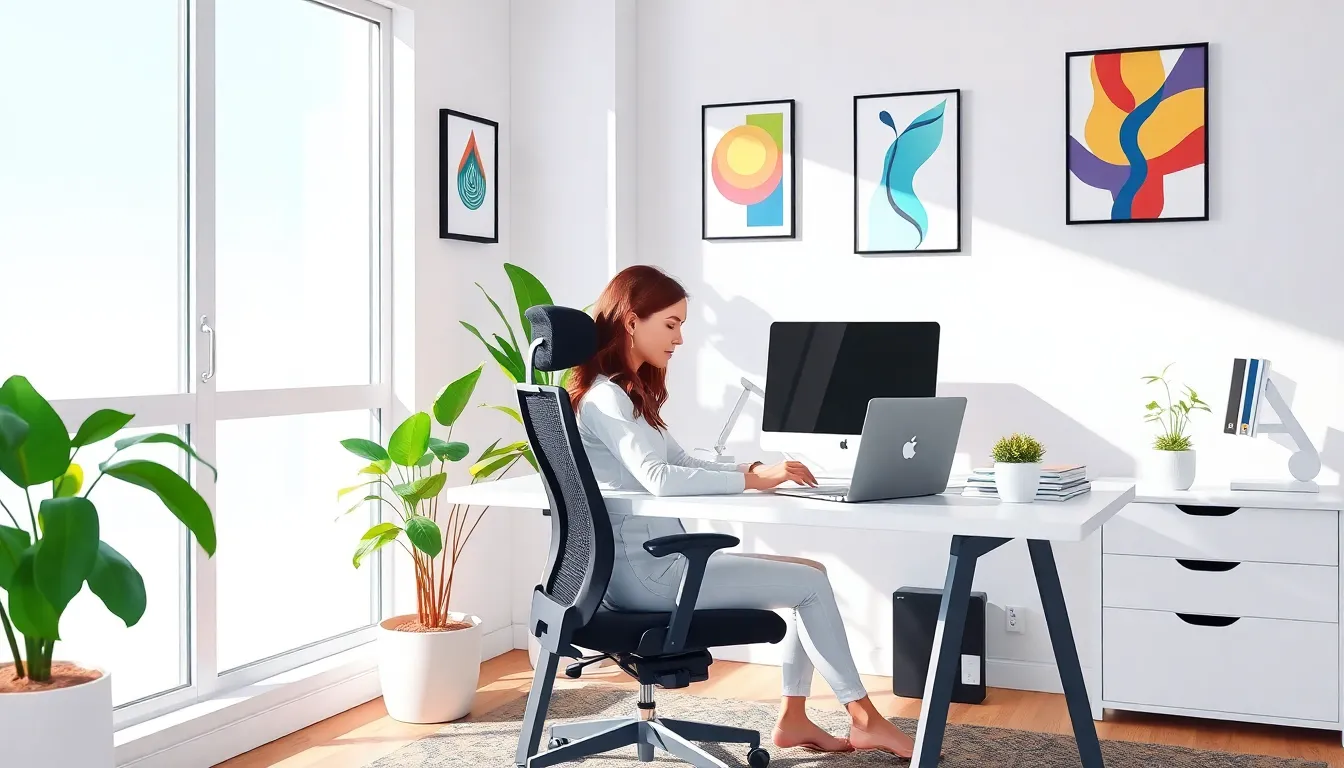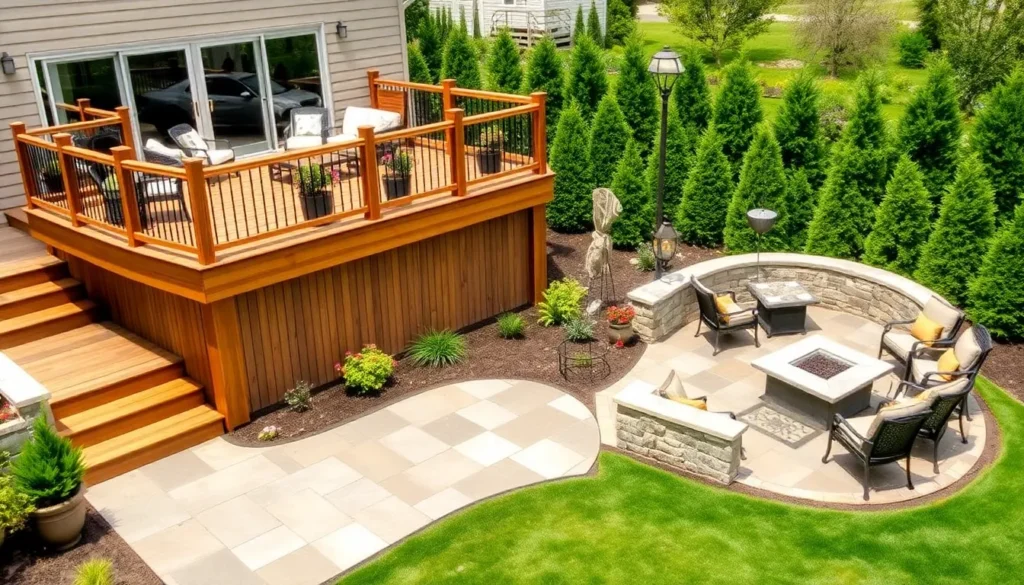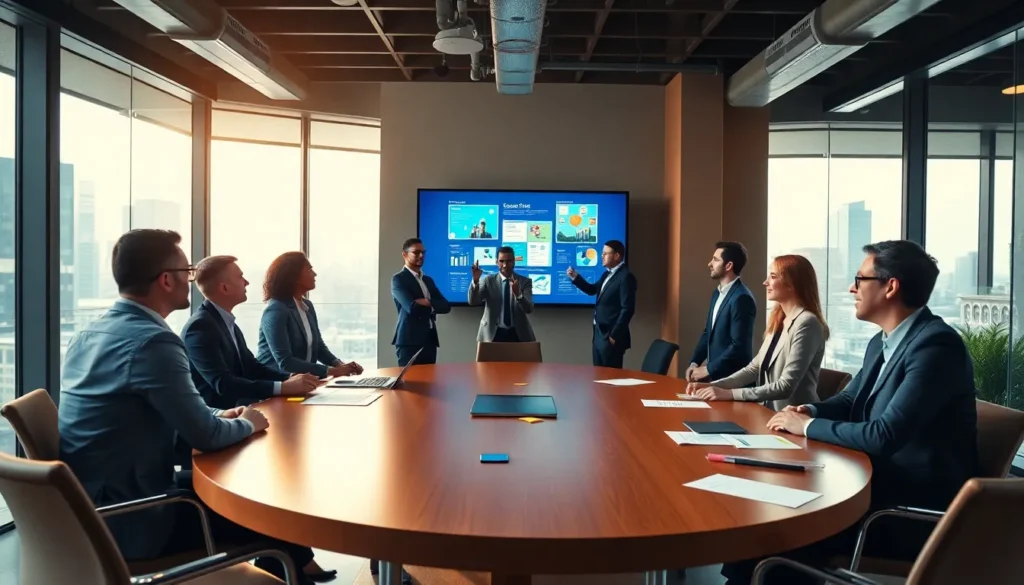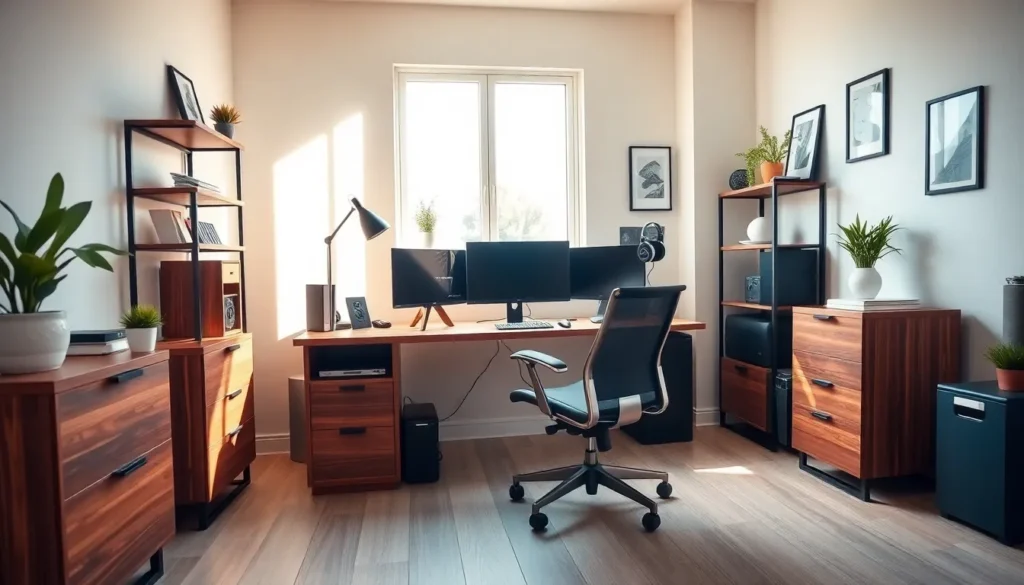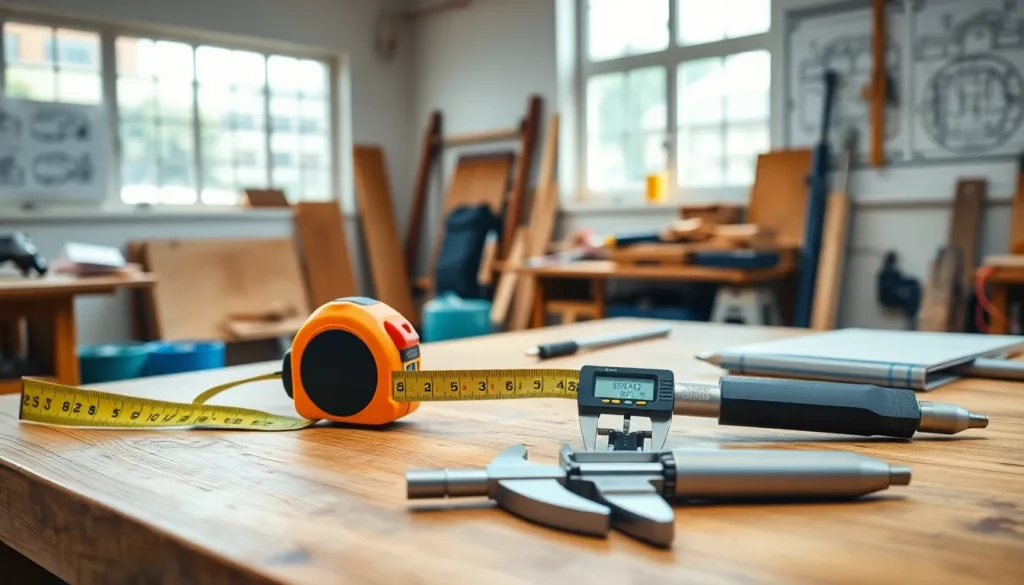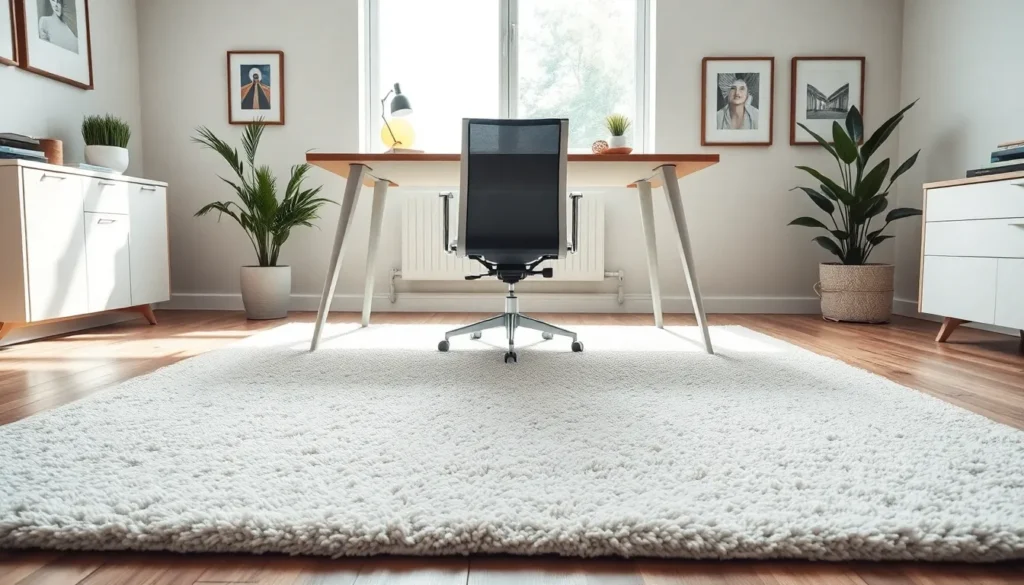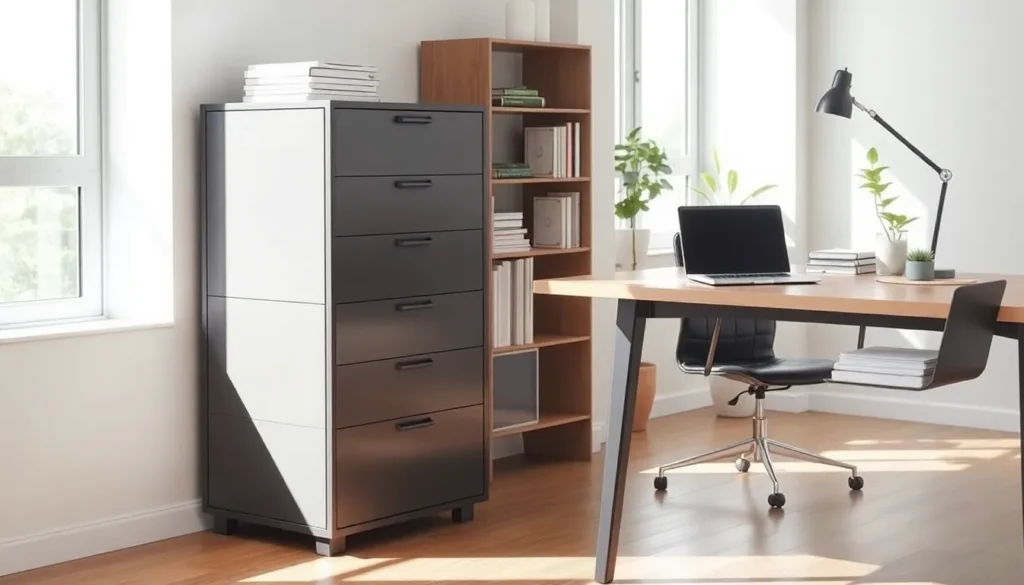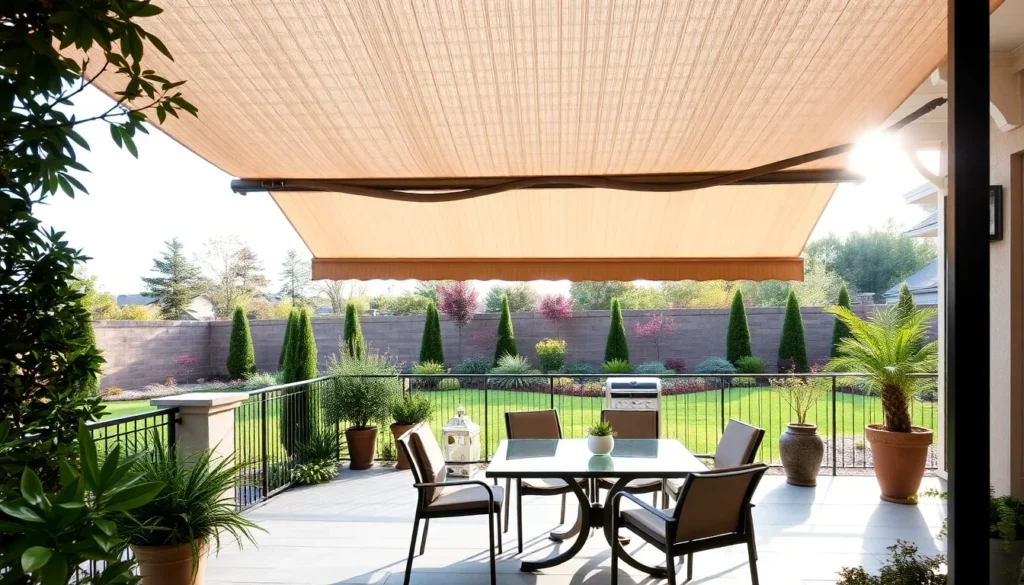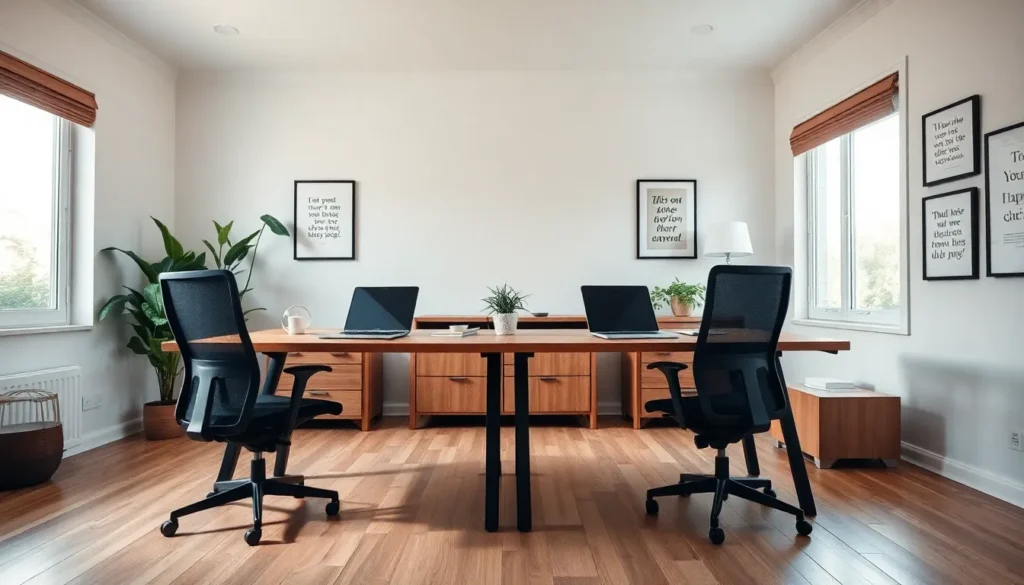In today’s world, working from home is more than just a trend; it’s a lifestyle. With the rise of remote work, home offices have transformed from neglected corners to stylish sanctuaries. But let’s be honest—nobody wants to stare at a pile of laundry while trying to conquer the latest project. It’s time to ditch the makeshift desk and elevate that workspace!
Table of Contents
ToggleOverview of Home Office Styles
Home office styles have diversified, reflecting personal tastes and functional needs. Traditional designs feature wooden desks and classic office chairs, promoting a formal atmosphere. Modern aesthetics incorporate sleek lines and minimal decor, emphasizing simplicity and open spaces.
Industrial themes incorporate raw materials, such as metal and reclaimed wood, creating an edgy yet functional environment. Cozy and inviting elements define bohemian styles, showcasing vibrant colors and eclectic furnishings.
Maximalist approaches encourage bold artwork and layered textures, fostering creativity within the workspace. Scandinavian design stands out with its focus on functionality and minimalism, which enhances natural light and promotes a serene ambiance.
Flexible arrangements support varying work styles, accommodating standing desks or lounge seating. Ergonomic furniture improves comfort and productivity, as specific items address individual needs.
Investing in organization tools, like shelving units and filing cabinets, strengthens efficiency in any home office style. Personalization through decorative items, plants, or lighting further enhances motivation and inspiration.
Selecting a cohesive color palette or theme ties all elements together, creating a harmonious workspace. Home offices are no longer an afterthought; they represent a vital aspect of modern living, elevating remote work experiences.
Popular Home Office Styles
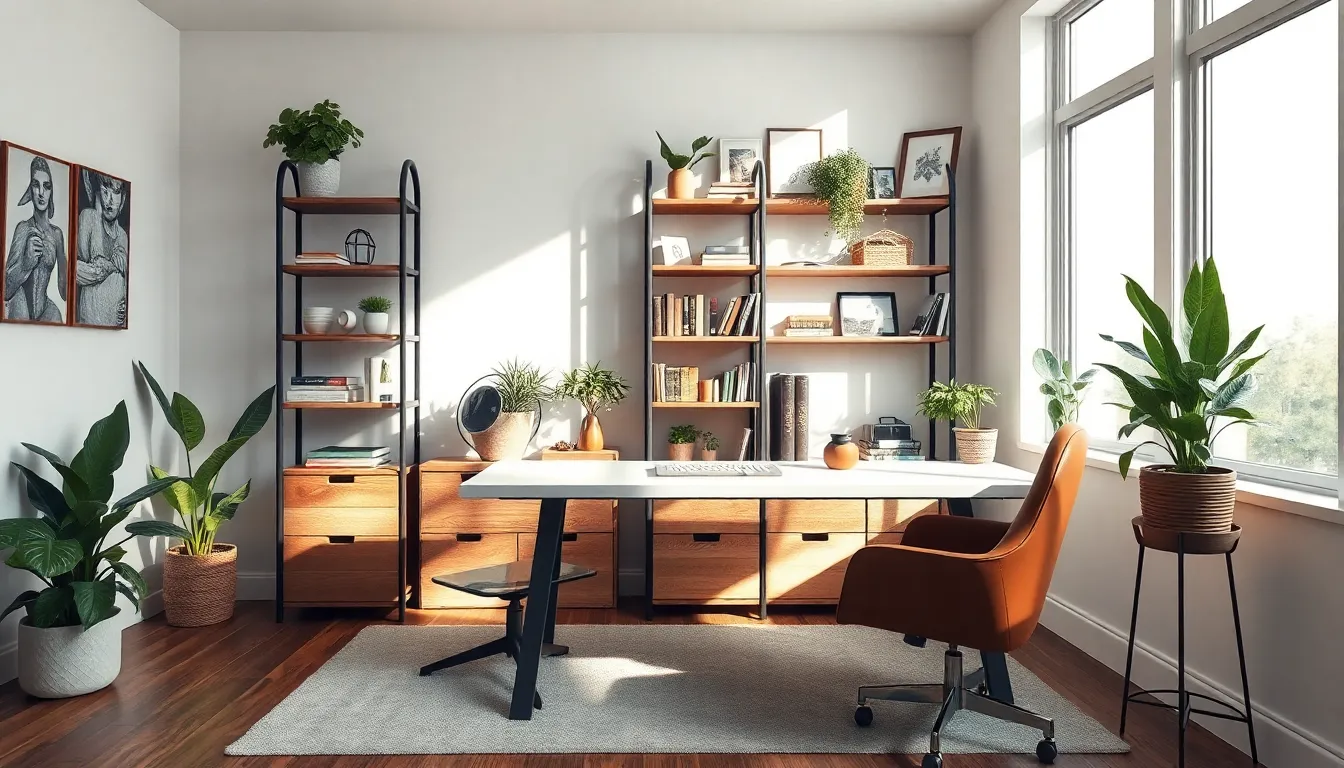
Home office styles vary widely, catering to personal tastes and practical needs. Each style promotes a unique atmosphere, enhancing the work-from-home experience.
Minimalist
Minimalist home offices prioritize simplicity and functionality. Clean lines and neutral colors create a calm environment that fosters concentration. Furniture pieces often feature sleek designs without excessive ornamentation. Storage solutions remain unobtrusive, helping to maintain an organized workspace. Certain elements, like a desk and a chair, serve as the focal point to avoid distractions. Incorporating natural light can further enhance this tranquil atmosphere.
Rustic
Rustic home offices convey warmth and comfort through natural elements. Wooden beams and reclaimed wood furniture contribute to an inviting aesthetic. Textures such as linen and wool add softness, creating a cozy work environment. Inviting plants bring life into the space, while large windows provide views of the outdoors. Personalized decor often includes vintage finds, adding character and charm. Each element harmonizes to create a relaxed and inspiring workspace.
Modern
Modern home offices embrace sleek design and cutting-edge technology. Open layouts allow for flexibility and ease of movement. Furniture tends to feature geometric shapes and bold colors, making a statement. Integrated smart technology promotes efficiency through automation. Lighting plays a key role, with contemporary fixtures enhancing the overall design. This aesthetic not only enhances functionality but also creates a motivational environment for productivity.
Choosing the Right Home Office Style
Choosing the right home office style involves careful consideration of both space and functionality. It’s essential to create an environment that promotes productivity while reflecting personal aesthetic preferences.
Assessing Your Space
Start with a detailed evaluation of the available area. Measure dimensions to understand what furniture fits comfortably. Observe natural light sources and assess how they can enhance the workspace. Consider existing design elements in the home that can inform the office layout. Think about storage needs and location to avoid clutter. Placement of the desk should facilitate focus and minimize distractions. Each of these factors contributes to an effective work environment.
Considering Your Needs
Identify specific work activities to determine office requirements. Determine if collaboration space is necessary for meetings or if a quieter setting is preferred for concentration. Incorporate ergonomic furniture to support long hours of work. Assess technology needs, such as computer setup and additional devices. Factor in personal preferences for decor to inspire creativity and maintain motivation. Prioritize organization tools tailored to the individual’s workflow for improved efficiency. Each consideration plays a crucial role in creating a functional home office that meets distinct needs.
Tips for Creating Your Home Office
Space optimization and personal style significantly enhance productivity in a home office. Individuals should focus on selecting the right furniture and decor elements to create a functional and inspiring workspace.
Furniture Selection
Prioritizing ergonomic furniture boosts comfort and supports health during long work hours. Desks should fit the size of the space and provide adequate surface area for equipment. Chairs must offer lumbar support, encouraging good posture. Storage solutions like shelves and filing cabinets keep essential items organized and accessible. Consider the office’s aesthetic; materials like wood or metal can complement the chosen design style. Vibrant colors in furniture can inject personality into the space. Choosing modular pieces allows for flexibility and adaptability to changing needs.
Decor Elements
Incorporating decor elements personalizes the office and enhances creativity. Wall art should reflect personal interests and inspire motivation. Plants improve air quality and add a touch of nature, promoting well-being. Lighting not only illuminates but also sets the tone; opt for warm lights to create a cozy atmosphere. Use rugs or curtains to define zones within the office, adding texture and warmth. Personal mementos, like photographs or travel souvenirs, can spark joy and enrich the workspace. Thoughtful decor choices elevate the overall ambiance, making the home office inviting and effective.
Creating a home office that reflects personal style and meets functional needs is essential in today’s remote work landscape. By choosing a design that resonates with individual preferences and enhances productivity, anyone can transform their workspace into an inspiring environment.
Whether opting for a minimalist aesthetic or a cozy rustic vibe, the right elements can significantly impact focus and motivation. Investing in ergonomic furniture and thoughtful decor not only elevates comfort but also fosters creativity.
Ultimately, a well-designed home office is more than just a workspace; it’s a crucial part of a balanced lifestyle that supports both work and personal well-being. Embracing this shift can lead to a more fulfilling and productive remote work experience.

